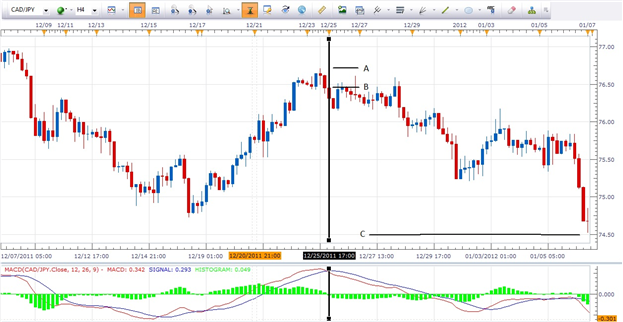Many traders bemoan the fact that the indicator they are using does not signal an entry on the first few pips of a move. They condemn the indicator for “lagging behind the market”…that is, signaling an entry after the initial move has begun.
Keep in mind that it is the very nature of indicators to lag the market.
All indicators, RSI, MACD, Stochastics, Moving Averages, etc., are going to be lagging to a greater or lesser degree since they are based on an average of price action that has already taken place. The result is that pips can be left behind since the initial part of the move has taken place before the entry signal is generated.
The longer the time frame of the chart and the greater the amount of periods comprising the indicator, the more reliable it will be since the signal is derived from a greater amount of data. While shorter time frames and fewer periods will generate more entry signals, because they are based on a lesser amount of data, more “false entry” signals will likely result.
Even though every trader would like to be in on the very first pip of a move, in my opinion, it is fine to miss the initial move that a pair makes in favor of entering a trade that has a greater level of confirmation behind it.
And therein lies the benefit of the lagging nature of indicators.
If we are looking to enter a trade at the very first sign that a move may be taking place, we are going to find ourselves entering many trades based on very short term signals and a low amount of data.
While we will give up some pips at the beginning of the move, this lagging aspect of indicators will get us into trades that have a bit more confirmation behind them based on the greater amount of data.
In other words, the indicator will force us to wait a bit before entering.
Let’s take a look at the historical 4 hour chart of the CADJPY with the MACD in place below…

If a trader had based their short entry on the MACD crossover, when the MACD line (red) crossed over the Signal Line (blue) to the downside, they would have given up the pips between point A and point B on the chart…about 26 pips.
However, inasmuch as the downward momentum signaled by the MACD cross was in place, there was the greater likelihood that the bearish move might follow through. As it turns out, it did; posting a gain of 220 pips between points B and C.
While this type of confirmation will not translate into a winning trade each and every time, waiting for the move to “mature” a bit before entering will result in taking higher probability trades.
Bottom Line: I would rather enter later and be right than enter earlier and be wrong.